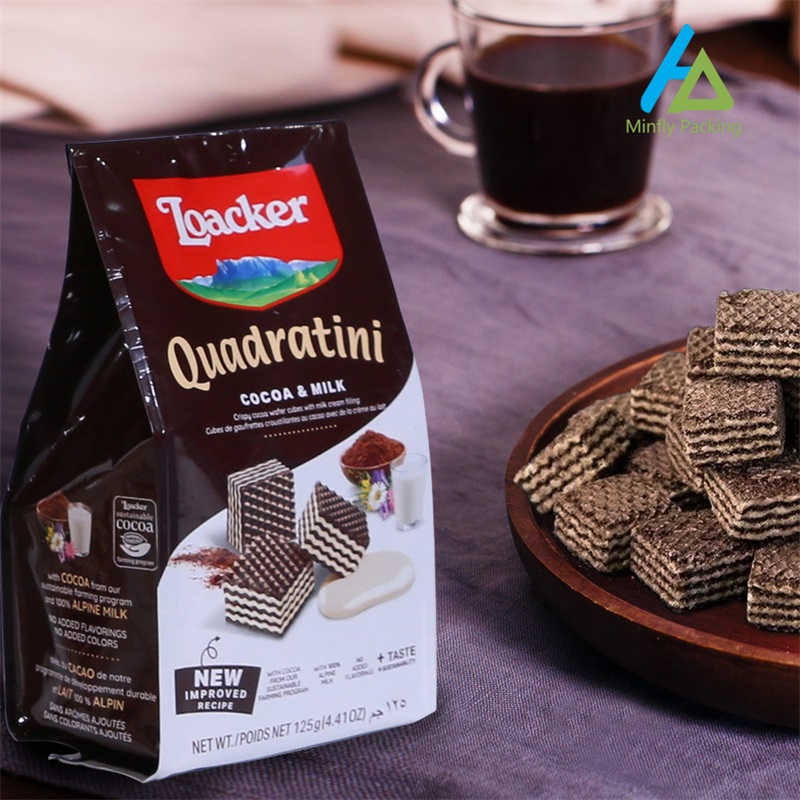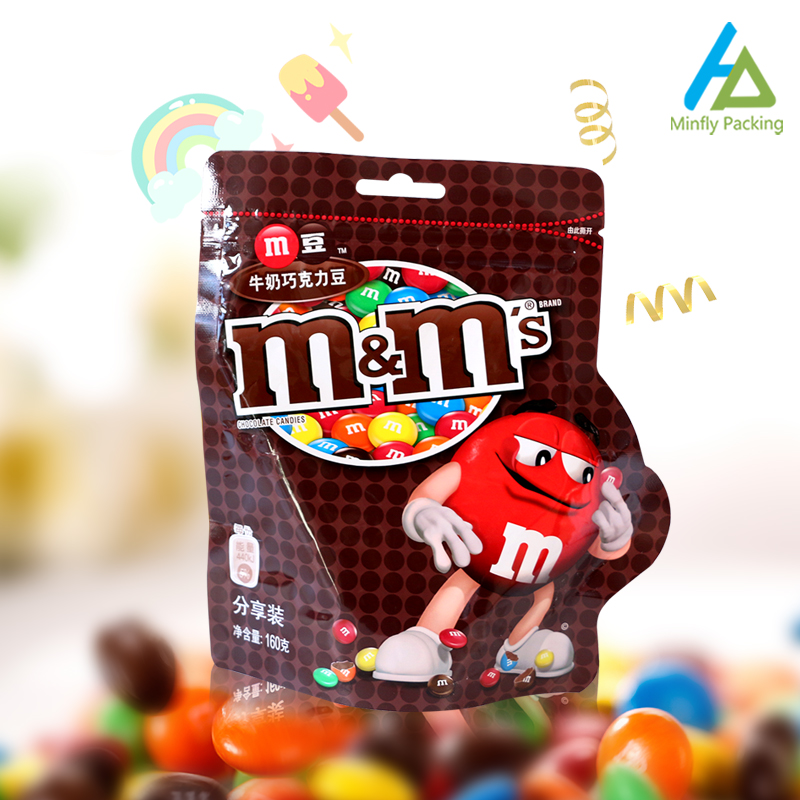The packaging of tomorrow is smart and geared towards specific target groups and amenities. “This is what unions in the metalworking, mining, chemicals and energy industries, such as IG metall, IG Bergbau, Chemie and Energie, mention in a report on the packaging industry, and it is certain that there will not be any in the next few years. any changes.
Resealable convenience packaging, extended shelf life and easy-to-open packaging are all important themes driving the continued growth of the industry. This development momentum of the packaging market is mainly driven by the Asian market, but also driven by the Eastern and Western European markets. In addition, urbanization and sustainable development themes are also stimulating the development of the packaging market.
Packaging is required for almost all industries. While usually used to protect the product and facilitate storage and transportation, packaging also helps differentiate the product and form a selling point.
The food packaging bag industry has always been an important market that the packaging industry is highly concerned about. In Europe alone, around 60% of food is wasted due to spoilage, a figure that would be significantly lower with proper packaging. In a sense, the protection of the product is the protection of the climate because, in order to replenish the food that was wasted due to improper protection, new food needs to be produced, and the resulting carbon footprint is often greater than that of production with proper packaging. Thus, avoiding spoiled food with a larger carbon footprint.
In short, the packaging industry will continue to prosper, but it must meet the needs of the market with innovative solutions.
Undoubtedly, packaging products are very diverse, and one article cannot cover them all, so only one topic and some examples are selected here.
Health is always the focus
A recurring topic related to plastic packaging is health. It goes without saying that every protective packaging benefits the health of the consumer by isolating the food from various external influences. In the beverage industry in particular, the addition of health-promoting substances to beverages is a growing trend, so special packaging protection is required for such beverages, such as fruit juice drinks with high vitamin content, as well as sports drinks and fitness drinks with special dietary supplements drinks. KHS Plasmax, based in Hamburg, Germany, has developed Plasmax technology to keep these drinks fresh in the bottle for a long time. Specifically, in a low pressure plasma process, a layer of pure silicon oxide (that is, glass) of about 50 nanometers is deposited on the inner wall of the PET bottle, so that the beverage is protected from the outside world, so it can be kept longer , the vitamins and additives will not be lost. Unlike competing multi-layer bottle technologies, Plasmax technology is slightly more complex, but results in significantly lower material costs per bottle. The main advantage of the Plasmax process is that the bottles are completely recyclable.
Healthy beverages with lumpy particles are another trend in the beverage industry, such as water with aloe vera pieces, and milk and yogurt with fruit pieces. This beverage requires not only a matching bottle shape, but also a filling technology that can measure solid particles hygienically and precisely. As one of several specialist machine builders in this field, Krones, based in Neutraubling, Germany, is offering its Dosaflex trademark special metering system, which can measure 3mm x 3mm x 3mm with a metering accuracy of ±0.3% The lumpy particles are measured.
However, due to the limited shelf life of dairy beverages, Holland Colors NV, Apeldoorn, The Netherlands, has launched its new Holcomer III solid additive, which provides 100% protection against UV radiation and up to 99% Protection against visible light, thus allowing the production of PET monolayer packaging solutions for pasteurized milk. The obvious advantage of this solution is its single-layer construction, which makes it easier to recycle than the corresponding multi-layer packaging.
Lightweight is the eternal theme
With every packaging solution, the weight is always the focus, and over the past few years, ideas and solutions for weight reduction have emerged. Between 1991 and 2013, the overall weight of the packaging has been reduced by 25% due to new designs and reduced wall thicknesses. Despite growing expectations for functionality, in 2013 alone, 1 million tonnes of plastic were saved globally from packaging weight savings. Taking PET bottles as an example, not only has the wall thickness been reduced, but the bottom design has also been optimized, and the new spiral design alone saves 2g of plastic per bottle. In order to optimize the bottom of the bottle, Creative Packaging Solutions Ltd., based in Balcova-Izmir, Turkey, has developed its Mint-Tec process, in which, after the preform is created, a piston extends into the bottle without touching the neck of the bottle. The bottom brings the desired shape.
Designed to be recyclable from the start
The packaging trends that take beverages as an example also apply to almost all other areas in the food industry, where weight reduction always comes first. This is of course because weight reduction is related to material savings and cost reduction, but it is not the only one. The reason, and more importantly, is that legislators and consumers are increasingly demanding “resource protection”, which is closely related to the concept of packaging recycling. In Germany, where almost all household packaging is reusable, more than half (56%) of it is recycled rather than incinerated, up from 3% just about 20 years ago. In this regard, PET bottles have a higher recycling rate, with 98% of the material being recovered and put back into the production cycle. That is, every new bottle produced today contains approximately 25% recycled material.
The utilization of waste packaging can be further improved if the packaging is designed to be recyclable from the beginning. As a polyolefin processor, Dr. Michael Scriba, Managing Director of mtm plastics in Niedergebra, Germany, is acutely aware of this problem. In his view, pure-bred plastics should be used wherever possible, rather than “paper-plastic” composites, and not dark or calcium carbonate-filled polyolefins. Also, PET should be preferred for bottles rather than deep drawn trays.
packaging bag
Films are getting thinner and more functional
With a market share of more than 40%, film is the most common plastic packaging used mainly for food, but of course also includes things such as bubble wrap or stretch film used to protect goods. Thin-film products are also increasingly showing a clear trend of “developing in the direction of thinness and functionalization”. Although multilayer films are most commonly used, in practice the functionality of the films can also be obtained through the use of suitable additives. The need for more and more layers has peaked with the advent of so-called “nanolayer” structures with 33 or more layers. Today, 3-layer and 5-layer films are standard products, and they especially facilitate the use of “cheap materials in the middle layer”.
Barrier films usually consist of 7 or more layers. With functional layers, multilayer films typically have thinner thicknesses than single-layer films. While maintaining function, the thickness of this film can also be reduced by stretching. Reifenhäuser Blown Films in Troisdorf, Germany showcases the Evolution Ultra Stretch unit dedicated to this purpose. Using this stretching unit, compression bag films for diapers can be produced at 50µm instead of 70µm, and silage stretch films with the same properties can be produced at 19µm instead of 25µm – thickness reduced by 30%.
Efficiency is a big topic in injection molding
In the production of injection-molded packaging materials, reducing thickness and saving material, as well as improving cycle time and production efficiency, are the focus of discussion. A high-performance injection molding machine from Netstal Maschinenbau GmbH in Näfels, Switzerland, equipped with an electric welding machine, can produce more than 43,000 round caps per hour, each weighing 7g.
In-mold labeling (IML) has long been one of the well-known methods of injection molding decoration, and the El-Exis SP 200 injection molding machine of Sumitomo Demag Plastics Machinery Co., Ltd. in Schwaig, Germany, with cycle times of less than 2s, This machine is probably the fastest machine for the production of IML decorative cups.
One process used to make even thinner, lighter injection-molded packaging products is injection molding (ICM) technology, which is gaining increasing attention from the industry. Unlike conventional injection molding, the process compensates for shrinkage without injecting additional material during the holding phase, resulting in material savings of up to 20%.
Industry Demonstrates Huge Innovation Capability
As already mentioned, it is impossible to cover all trends and news in a single article, but here are some commonalities:
There is a growing trend towards the use of biodegradable plastics for food packaging, and new products are increasingly entering the market.
Using the direct printing process, patterns can be printed directly on the plastic packaging and its lids without the use of labels, and the digitally printed patterns can be modified and obtained directly at the touch of a button, thus making Personalization is obvious – each product can have its own printed character.
Efficiently generating personalized prints at the touch of a button, a decorative trend in the packaging industry
Injection molding machine manufacturers specialize in injection blow molding applications, where an injection molded preform is blown directly in a multi-station mold, and can be overmolded if desired. Very attractive packaging products can be produced with this technology.
For injection-molded and deep-drawn packaging products, Cavonic, based in Engel, Germany, has introduced the ibt process, a method of applying a glass-like thin layer during low-pressure plasma treatment, which can prolong , shelf life of foods such as baby food and dairy products in clear single-layer packaging.
With the right machinery, deep-draw in-mold labeling (IML) trays can be produced at a lower cost than injection-molded parts. The thermoforming system built by Yili Machinery Co., Ltd. in Heilbronn, Germany, is able to produce lighter pallets at a faster rate, at a production cost of 43.80 euros per 1,000 pallets, compared to in-mold labeling The same number of pallets of the same type produced by (IML) injection moulding technology is €51.60.
Post time: Sep-15-2022



